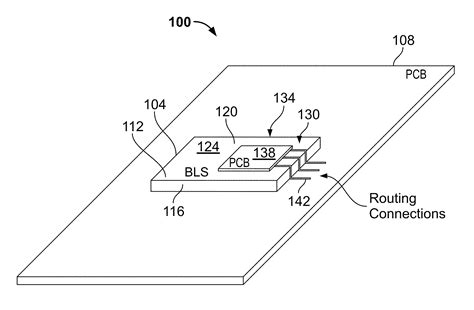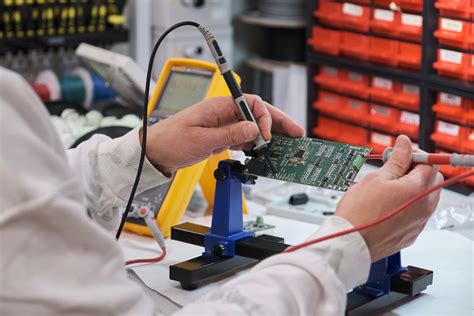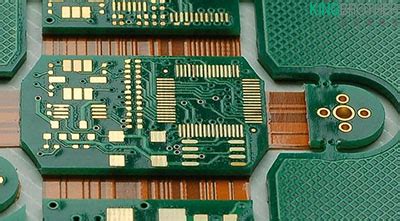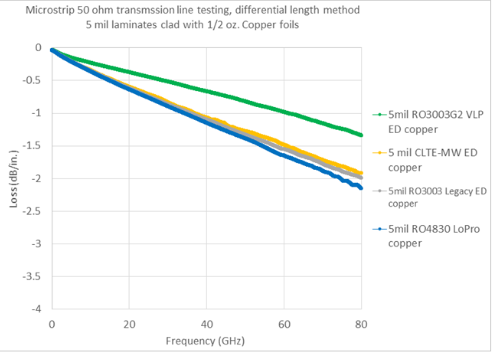Mastering Advanced Circuits Assembly: The Future of Innovation
Key Takeaways
Mastering advanced circuits assembly is pivotal in the ongoing evolution of technology. With techniques such as pcb assembly and pcba becoming increasingly sophisticated, professionals in the field can leverage these innovations to create more efficient and powerful products. One significant advantage of these cutting-edge methods is their ability to enhance the connectivity and functionality of electronic devices. As industries—from consumer electronics to medical devices—rapidly evolve, the demand for improved pcb assembly solutions escalates, fostering an environment ripe for innovation. Furthermore, adopting state-of-the-art tools not only streamlines the assembly process but also minimizes production errors, significantly improving overall reliability. Challenges within production are ever-present; however, they can often be mitigated through thoughtful application of emerging technologies designed for advanced circuits assembly. Thus, it is crucial for professionals to stay informed about new developments in this area to harness the potential that will drive future advancements across various sectors and reshape our daily interactions with technology.
Introduction to Advanced Circuits Assembly
In today’s fast-paced technological landscape, advanced circuits assembly plays a pivotal role in fostering innovation. As industries increasingly rely on high-quality devices, mastering pcb assembly and pcba processes becomes essential. This intricate craft not only enhances the functionality of electronic devices but also drives significant improvements in speed and efficiency. The evolution of automated techniques and precision engineering has led to a deeper understanding of materials, ensuring optimal performance in pcb assembly.
“Investing in sustainable practices and cutting-edge technologies will inevitably shape the future of electronic manufacturing.”
The ability to assemble advanced circuits proficiently opens doors to numerous applications across sectors such as telecommunications, healthcare, and automotive industries. By adopting innovative circuit assembly techniques, businesses can reduce production costs while delivering high-quality products to consumers. As we delve deeper into this field, it’s essential to recognize that every breakthrough in pcba builds upon the foundations laid by previous innovations. Thus, an ongoing commitment to research and development is crucial for sustaining advancements within this arena.
Key Innovations in Circuit Assembly Techniques
In the realm of advanced circuits assembly, several key innovations stand out, driving the efficiency and effectiveness of the process. The evolution of pcb assembly has transformed traditional manufacturing methods, allowing for greater precision and automation. One notable advancement includes the adoption of surface-mount technology (SMT), which facilitates the placement of components directly onto the surface of printed circuit boards (PCBs). This not only streamlines production but also enhances performance by reducing signal interference.
Moreover, the integration of computer-aided design (CAD) software enables manufacturers to optimize layout designs before production, minimizing errors and reducing material waste. Techniques such as pcba testing through automated optical inspection (AOI) further ensure quality control by detecting defects early in the assembly process. The rise of flexible and hybrid circuits has also opened new avenues in circuit assembly, allowing for more versatile applications across diverse industries.
Additionally, advancements in soldering technology, including selective soldering and laser soldering, ensure robust connections while reducing thermal stress on components. These innovations are pivotal as they not only improve manufacturing capabilities but also contribute to the development of smaller, more efficient devices that meet the demands of today’s fast-paced technological landscape. By embracing these breakthroughs in circuit assembly techniques, companies can position themselves at the forefront of innovation and continue to drive improvements across multiple sectors.
The Impact of Advanced Circuits on Various Industries
The integration of advanced circuits assembly is significantly reshaping multiple sectors, driving efficiency and innovation. In industries such as automotive, healthcare, and consumer electronics, the precise techniques involved in pcb assembly and pcba are creating unparalleled enhancements in product performance. For instance, in the automotive sector, advanced circuits are crucial for enabling sophisticated safety features and autonomous driving technologies. Meanwhile, healthcare applications benefit from miniaturized circuits that allow for more effective diagnostic tools and wearable devices. The consumer electronics market also leverages advanced circuits to achieve sleek designs and improved functionality in devices such as smartphones and smart home systems. Furthermore, the rapid evolution of these techniques promotes sustainability through reduced waste and energy consumption during manufacturing processes. As businesses adapt to these advancements, they not only enhance their operational capabilities but also contribute to a more interconnected future, highlighting the essential role that pcba will play in upcoming technological innovations. By embracing these changes, industries stand to gain a competitive edge while fostering a collaborative environment for future breakthroughs.
Tools and Technologies for Efficient Assembly
The field of advanced circuits assembly has been significantly transformed by the emergence of modern tools and technologies. These innovations are pivotal in optimizing processes such as PCB assembly and PCBA, enabling manufacturers to achieve remarkable precision and efficiency. Recent advancements include automated soldering machines, which allow for rapid scaling of production while maintaining high quality. Furthermore, software tools equipped with artificial intelligence are revolutionizing the design and testing phases, significantly reducing the time needed for prototyping.
| Tool/Technology | Description | Benefits |
|---|---|---|
| Automated Soldering | Machines that use robotics for soldering | High speed, consistent quality |
| AI-Driven Design | Software that optimizes circuit design | Shortens prototyping time |
| Laser Cutters | Precision tools for creating circuit layouts | Enhanced accuracy |
| Inspection Systems | Automated systems for quality checks | Early detection of defects |
These tools not only streamline the production process but also enhance overall product reliability. By employing cutting-edge solutions like these, companies can stay competitive while driving forward innovations in advanced circuits assembly. Embracing these technologies paves the way for the next generation of high-performance electronic devices, ultimately impacting various industries positively. With this arsenal of tools at their disposal, manufacturers can address challenges head-on, ensuring that their products meet the ever-evolving demands of the market.
Challenges and Solutions in Advanced Circuit Production
The landscape of advanced circuits assembly presents a unique set of challenges that must be navigated to ensure optimal production efficiency and quality. One of the primary difficulties is achieving precision during the pcb assembly process. As circuit designs become increasingly complex, maintaining exact dimensional tolerances is crucial. To mitigate this issue, manufacturers are beginning to adopt automated assembly technologies which utilize robotics and advanced software to enhance precision and reduce human error.
Another significant challenge is the sourcing of high-quality materials that can withstand the demands of modern applications. As technology advances, materials used in pcba must not only meet current standards but also be adaptable to future innovations. Developing robust relationships with reliable suppliers can ensure that manufacturers have access to the necessary components for their advanced circuits assembly needs.
Additionally, the management of waste and environmental impact is increasingly scrutinized in today’s manufacturing landscape. Implementing sustainable practices in production processes not only addresses environmental concerns but can also lead to cost savings. Techniques such as recycling scrap materials and optimizing energy usage during pcb assembly are becoming essential strategies for industry leaders.
Finally, workforce training plays a crucial role in overcoming these production challenges. The rapid evolution of technology necessitates ongoing education for workers involved in advanced circuits assembly. Companies investing in comprehensive training programs will likely see improved productivity and innovation capacity within their teams.
By addressing these challenges with innovative solutions, the field of advanced circuit production can continue to thrive, pushing technological boundaries further than ever before.
Case Studies: Success Stories in Circuit Innovation
In recent years, the realm of pcb assembly has witnessed remarkable transformations, driven by innovative techniques and technologies. Various industries have leveraged pcba advancements to enhance their products and streamline production processes. For instance, a notable success story comes from the automotive sector, where manufacturers have adopted advanced circuit assembly techniques to create more efficient electronic control units (ECUs). These ECUs not only improve vehicle performance but also contribute to the implementation of autonomous driving features. Moreover, in the consumer electronics industry, companies are utilizing cutting-edge circuit assembly methods to develop compact and powerful devices while minimizing costs.
Another compelling case can be observed within medical technology, where advanced pcb assembly processes are pivotal in designing life-saving equipment with intricate circuits that ensure reliability and precision. These success stories underscore the potential of mastering pcba techniques to foster innovation across diverse sectors. By embracing these advanced methods, businesses can not only improve efficiency but also position themselves at the forefront of technological advancement, paving the way for future breakthroughs that can reshape entire industries.
Future Trends in Advanced Circuits Assembly
As industries evolve, the landscape of pcb assembly and pcba is witnessing transformative changes that promise to redefine technological capabilities. One significant trend on the horizon is the integration of automation and robotics in advanced circuits assembly. This shift not only enhances efficiency but also minimizes human error, leading to higher quality outcomes. Furthermore, the emergence of smart fabrication techniques harnesses data analytics and machine learning, enabling real-time adjustments during the assembly process. Another noteworthy trend is the adoption of sustainable practices, which are becoming vital as organizations strive to meet environmental regulations and consumer expectations. These eco-friendly approaches focus on reducing waste in pcb assembly, promoting the recycling of materials, and optimizing resource use throughout production. As we look ahead, collaborations across industries will likely spur innovations that enhance product performance while maintaining cost-effectiveness. The integration of advanced circuits assembly with emerging technologies such as 5G and IoT will also open new avenues for applications within various sectors ranging from automotive to healthcare, further driving the evolution of technology. As these trends unfold, mastering modern techniques in pcba will become essential for those aiming to stay competitive in an ever-changing market landscape.
Conclusion: Embracing the Future of Technology
As we look toward the horizon of technology, the role of advanced circuits assembly cannot be overstated. The advent of pcb assembly techniques has fundamentally reshaped how industries operate, fostering unparalleled efficiency and precision. Innovations in pcba processes not only enhance the performance of electronic devices but also contribute to significant cost reductions and sustainability efforts. The capacity to swiftly adapt and integrate new methodologies in circuit assembly unlocks a plethora of possibilities across various sectors, from telecommunications to automotive engineering. By mastering these cutting-edge techniques, businesses position themselves at the forefront of technological advancement, poised to respond adeptly to shifting market demands. Thus, embracing advanced circuits assembly is not merely an option but a necessity for those who aspire to lead in innovation and improve their competitive edge in an increasingly complex landscape. The future beckons—a future defined by smart technologies that rely heavily on sophisticated pcba solutions for seamless operation and cutting-edge functionality. As we advance, it is imperative that industry players engage with these trends, ensuring they are equipped to tackle both challenges and opportunities that lie ahead in the ever-evolving world of technology.
Conclusion: Embracing the Future of Technology
As we look toward the future of technology, it is evident that advanced circuits assembly will play a pivotal role in shaping various industries. The shift toward increasingly sophisticated pcb assembly methods not only enhances the performance and reliability of electronic devices but also streamlines production processes. Companies that adopt innovative pcba techniques will likely gain a competitive edge, enabling them to meet the growing consumer demand for faster and more efficient devices. The future promises exciting advancements, with emerging trends such as automation and artificial intelligence further optimizing circuit production. Embracing these innovations is essential for businesses aiming to thrive in an ever-evolving marketplace. By staying at the forefront of advanced circuits assembly, organizations can drive significant progress and pave the way for a more interconnected and technologically advanced society. The commitment to mastering these techniques will ultimately lead to breakthroughs that are not only beneficial for individual companies but also for global technological advancement as a whole.
FAQs
What is PCB assembly?
PCB assembly, often abbreviated as PCBA, is the process of soldering components onto a printed circuit board (PCB) to create a functional electronic assembly.
How does advanced circuits assembly improve the production process?
Advanced circuits assembly utilizes state-of-the-art techniques and technologies to enhance efficiency and accuracy, reducing waste and improving production timelines.
What industries benefit from PCBA?
Various industries including automotive, telecommunications, medical devices, and consumer electronics significantly benefit from pcb assembly by enabling the development of more advanced and reliable products.
What are some challenges in advanced circuits assembly?
Challenges include complexity in design, the need for precision in component placement, and ensuring quality control throughout the production process.
How can companies overcome issues in circuit production?
Companies can adopt modern tools and technologies that enhance collaboration and communication within teams, implement rigorous quality checks, and continuously invest in staff training concerning the latest industry innovations.
What tools are essential for efficient PCB assembly?
Essential tools include pick-and-place machines, reflow ovens, and automated inspection systems that help streamline processes while ensuring high-quality outputs.







